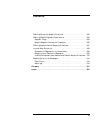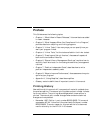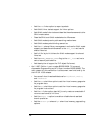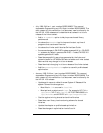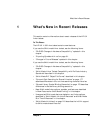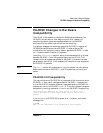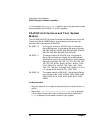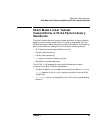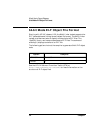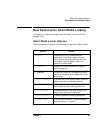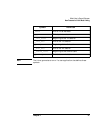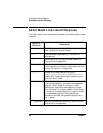
Chapter 1 21
What's New in Recent Releases
PA-RISC Changes in Hardware Compatibility
PA-RISC Changes in Hardware
Compatibility
The HP-UX 10.20 release introduced HP 9000 systems based on the
PA-RISC 2.0 architecture. Also, beginning with that release, HP
compilers by default generate executable code for the PA-RISC
architecture of the machine on which you are compiling.
In previous releases, the compilers generated PA-RISC 1.0 code on all
HP 9000 Series 800 servers and PA-RISC 1.1 code on Series 700
workstations. HP compilers now by default generate PA-RISC 1.1 code
on 1.1 systems and 2.0 code on 2.0 systems.
Using the +DAportable compiler option provides compatibility of code
between PA-RISC 1.1 and 2.0 systems. Note that the HP-UX 10.10
release is the last supported release for PA-RISC 1.0 systems, so code
generated by the HP-UX 10.20 release of HP compilers is not supported
on PA-RISC 1.0 systems.
NOTE The +DA1.0 option will be obsolete in a future release. You can achieve
better performance on PA-RISC 1.1 and 2.0 systems by not using this
option.
PA-RISC 2.0 Compatibility
The instruction set on PA-RISC 2.0 is a superset of the instruction set on
PA-RISC 1.1. As a result, code generated for PA-RISC 1.1 systems will
run on PA-RISC 2.0 systems. However, code generated for PA-RISC 2.0
systems will not run on PA-RISC 1.1 or 1.0. The linker issues a hardware
compatibility warning whenever it links in any PA-RISC 2.0 object files:
/usr/ccs/bin/ld: (Warning) At least one PA 2.0 object file
(sum.o) was detected. The linked output may not run on PA 1.x
system.
If you try to run a PA-RISC 2.0 program on a 1.1 system, you'll see a
message like:
$ a.out
ksh: ./a.out: Executable file incompatible with hardware



